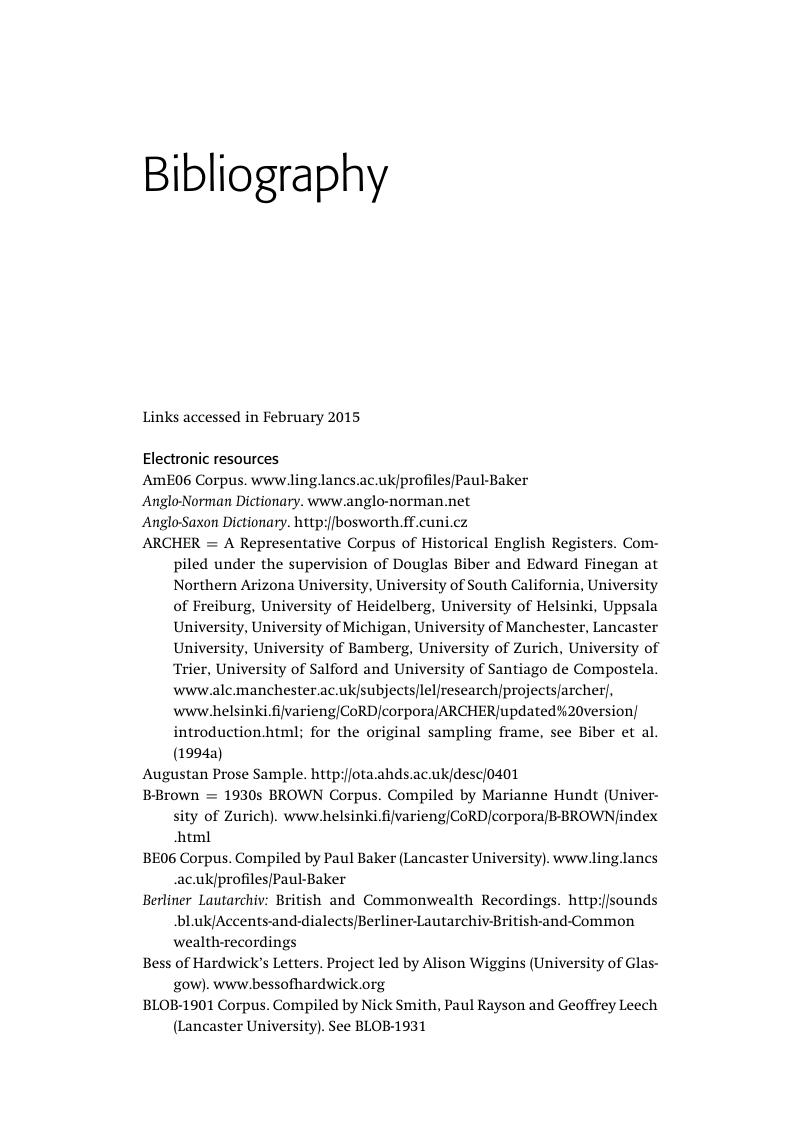Book contents
- The Cambridge Handbook of English Historical Linguistics
- Cambridge Handbooks in Language and Linguistics
- The Cambridge Handbook of English Historical Linguistics
- Copyright page
- Contents
- Figures
- Maps
- Tables
- Contributors
- Book part
- Glossary
- Introduction
- Part I Framework
- Part II Analyses
- Bibliography
- Subject index
- Name index
- References
Bibliography
Published online by Cambridge University Press: 05 May 2016
- The Cambridge Handbook of English Historical Linguistics
- Cambridge Handbooks in Language and Linguistics
- The Cambridge Handbook of English Historical Linguistics
- Copyright page
- Contents
- Figures
- Maps
- Tables
- Contributors
- Book part
- Glossary
- Introduction
- Part I Framework
- Part II Analyses
- Bibliography
- Subject index
- Name index
- References
Summary

- Type
- Chapter
- Information
- The Cambridge Handbook of English Historical Linguistics , pp. 497 - 602Publisher: Cambridge University PressPrint publication year: 2016



